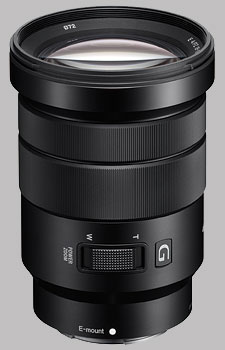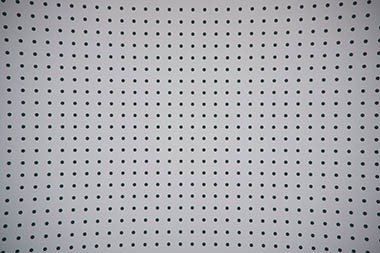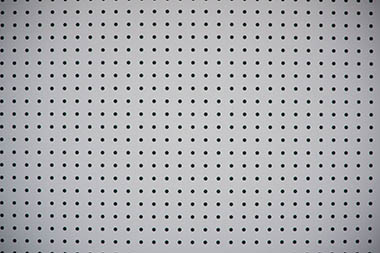| 18-105mm |
$598 average price |
|---|---|

|
|
Your purchases support this site
Buy the Sony E 18-105mm f/4 G PZ OSS SELP18105G
SLRgear Review
September 10, 2014
by Andrew Alexander
Sony announced the 18-105mm ƒ/4 G PZ OSS lens in August of 2013, an E-mount lens featuring a power zoom function. The design of the lens is wholly electronic; unlike conventional lenses which couple the zoom and focus control to gears, turning a ring adjusts the setting electronically.
With its power zoom function and constant ƒ/4 aperture, the lens is clearly aimed at the video market. The lens is designed to fit the APS-C sized sensor of its digital cameras and provides an effective field of view of 27-158mm in 35mm film terms.
The lens takes 72mm filters, ships with the ALC-SH128 petal-shaped lens hood, and is available now for around US$600.
Sharpness
The 18-105mm ƒ/4 G PZ OSS provides good results for sharpness, but not great - Sony has probably made a few concessions in the design to allow for the power zoom functionality. With the lens used wide open at ƒ/4, we note soft corners outside of some decent central sharpness, regardless of the focal length (and in our copy, there's some de-centering with the lens used at the 50mm setting).
Stopping down does help achieve better results for sharpness across all focal lengths. Optimal sharpness was achieved at 50mm and ƒ/8, where we noted almost but not quite tack-sharp results across the frame. Diffraction limiting sets in at ƒ/11, but you'd be hard-pressed to notice it until ƒ/16 or ƒ/22, where we note generalized softness across the frame.
Chromatic Aberration
We note a fairly high level of chromatic aberration when the lens is used at either the 18mm or 105mm focal length - more so at 105mm then 18mm. In these cases CA manifests as magenta fringing in areas of high contrast. Generally, its slightly better at wider apertures than at small (the worst results are noted at ƒ/22 and 105mm).
Shading (''Vignetting'')
When the 18-105mm ƒ/4 G is used at 18mm and ƒ/4, we note some significant corner shading - the extreme corners are slightly more than 3/4 of a stop darker than the center of the frame. It's less significant at any other focal length and aperture - after about ƒ/8 it becomes marginal - but it never completely goes away.
Distortion
Distortion has been a controversial topic with this lens. Sony's digital cameras do a lot of heavy lifting in correcting deficiencies created by its lenses, and it's definitely happening with this lens. In fact it's some of the strongest distortion we've ever seen on a lens, and the most interesting - barrel distortion through the majority of the image, yet pincushion distortion on the edges. Uncorrected, it's strong at the wide angle, and off the charts at telephoto. However, with Sony's newer cameras, you won't ever see these deficiencies, as the software in the camera corrects for it.
Unfortunately, some of the target users for this lens are those using Sony's higher-end video cameras, the FS100 and FS700. These cameras have not been updated to work with the 18-105mm ƒ/4, and show very noticeable pincushion distortion when used at anything but wide angle. In this case a picture is worth a thousand words, so here is a before and after photo of the distortion correction used in this lens:

Uncorrected Image
Corrected Image
Autofocus Operation
The Sony 18-105mm ƒ/4 G PZ OSS is fairly quick to autofocus - the lens takes just under a second to slew through the entire range of focus. Small changes in focus are conducted extremely quickly. The ring will turn all the way around with no stops. When using manual focus as you turn the ring the central section of the LCD displays an enlarged (7X or 14X) view of the image. It makes the camera very easy to use for manual focusing with this lens.
Macro
With a magnification ratio of just 0.11x, this lens isn't designed for macro work. The minimum close-focusing distance changes as the lens is zoomed out; at 105mm, it's 95cm (just over 3 feet), and at 18mm it's 45cm (around a foot and a half).
Build Quality and Handling
The construction of the lens uses Sony's standard satin black finish, combined with a metal lens mount and a plastic filter ring. Seven rounded diaphragm elements make up the aperture, producing nice out-of-focus backgrounds. There only control surface on the lens other than the focus and zoom rings is the power zoom switch, as all lens functions are controlled via the camera. As well, there is no distance scale, depth-of-field scale or infrared index marker.
The focusing ring is plastic with large ribs, about 1/2'' wide. The ring will rotate forever in either direction with no hard or soft stops, and doing so brings the camera into manual focusing mode, with the 7X or 14X enlargement as previously described. The ring is nicely cammed and takes just a bit of pressure to adjust focus. There is no rotation of the front element during focus, so attached filters will stay in place.
The zoom ring is almost one inch wide, rubber with large raised ribs. The ring is smooth to turn, taking a single finger to make adjustments. The zoom on the lens is controlled electronically, so the ring will turn forever in either direction. The power zoom is a variable lever; pressing it slightly will give you a slight zoom movement, while pressing it all the way will make it zoom as fast as possible. The lens does not extend while zooming, and zoom creep is not a factor with this lens.
The lens offers Optical Steadyshot (OSS) image stabilization, which produced about 2 stops of hand-holding steadiness at 18mm, and 3 stops of steadiness at 105mm.
The lens ships with the ALC-SH128 lens hood. The petal-shaped hood is around two inches long and has a smooth black finish on the inside.
Alternatives
Sony E 18-200mm ƒ/3.5-6.3 OSS PZ ~$1,200
We haven't yet tested this lens, but if you're unconcerned about the variable aperture and want a bit more reach, this would be the lens for you, as it also features both Optical Steadyshot and Power Zoom technologies.
Sony E 16-50mm ƒ/3.5-5.6 PZ OSS ~$350
A relatively tiny lens, the 16-50mm doesn't offer quite the same reach, but does offer the Power Zoom and Steadyshot functions as the 18-105mm. The 16-50mm is about as sharp if not slightly sharper than the 18-105mm, as well as having better tolerance to chromatic aberration; corner shading is a bit worse, and distortion is the same mixed bag of tricks.
Conclusion
Adding power zoom to a lens seems like a good idea, especially to capture the interest of video-centric camera users; the problem here is that serious professionals currently using the FS100 and FS700 cameras don't have the benefit of in-camera distortion correction (hopefully this will be addressed in a firmware update). For other users, the lens is a welcome addition to Sony's growing lineup of PZ lenses, offering a constant ƒ/4 aperture.
Product Photos
 |
 |
 |
 |
Sample Photos
Click here for Real-world Gallery Images on our Flickr page!
The VFA target should give you a good idea of sharpness in the center and corners, as well as some idea of the extent of barrel or pincushion distortion and chromatic aberration, while the Still Life subject may help in judging contrast and color. We shoot both images using the default JPEG settings and manual white balance of our test bodies, so the images should be quite consistent from lens to lens.
As appropriate, we shoot these with both full-frame and sub-frame bodies, at a range of focal lengths, and at both maximum aperture and ƒ/8. For the ''VFA'' target (the viewfinder accuracy target from Imaging Resource), we also provide sample crops from the center and upper-left corner of each shot, so you can quickly get a sense of relative sharpness, without having to download and inspect the full-res images. To avoid space limitations with the layout of our review pages, indexes to the test shots launch in separate windows.
Sony E 18-105mm f/4 G PZ OSS SELP18105G
Your purchases support this site
Sony E-mount - Black
Sony E 18-105mm f/4 G PZ OSS SELP18105G User Reviews
-
Range, color rendition, contrast, build qualityNot extremely sharp
Excellent portrait shots - due to center sharpness. Stopped down to "normal" landscape apertures (F/5.6 - 8.0), delivers excellent colors.
reviewed April 6th, 2015 (purchased for $620)
Nothing to complain, actually. -
great zoom range, smooth power zoomsoft wide open
This is a great lens, pleasure to shoot with. It's not as heavy as it looks and sits very well on A6000. The zoom ring is very smooth and responsive, and the zoom range is very convenient.
reviewed June 10th, 2014 (purchased for $598)
There is only one problematic area, the lens is very soft wide open in the whole zoom range, there are some visible spherical and chromatic aberrations as well. Shooting indoors at high ISO masks those problems to a degree due to noise and low contrast. Shooting wide open in good daylight is not recommended. When closed down by one stop lens becomes very good.





